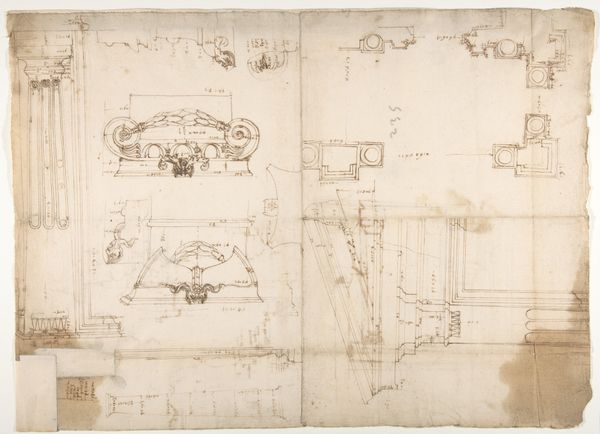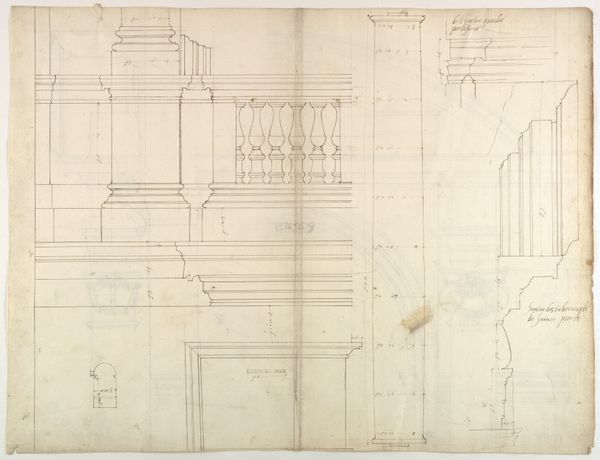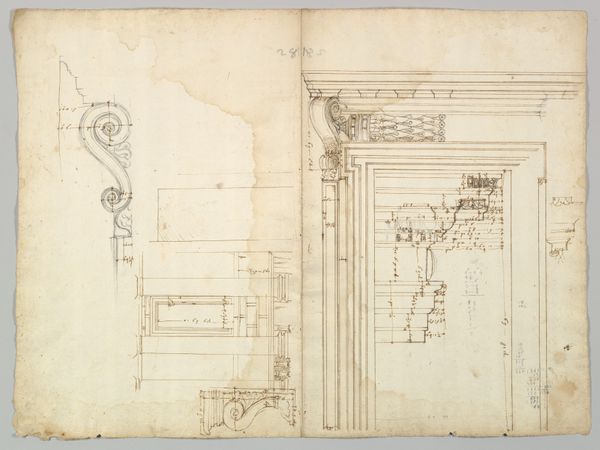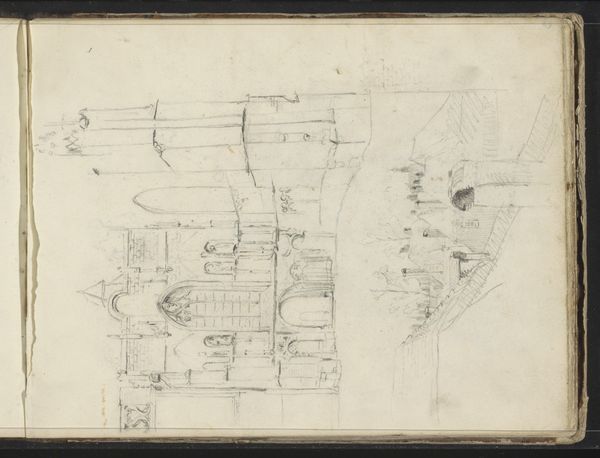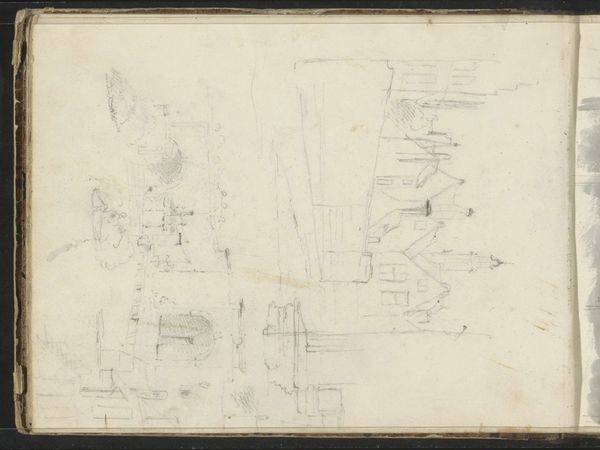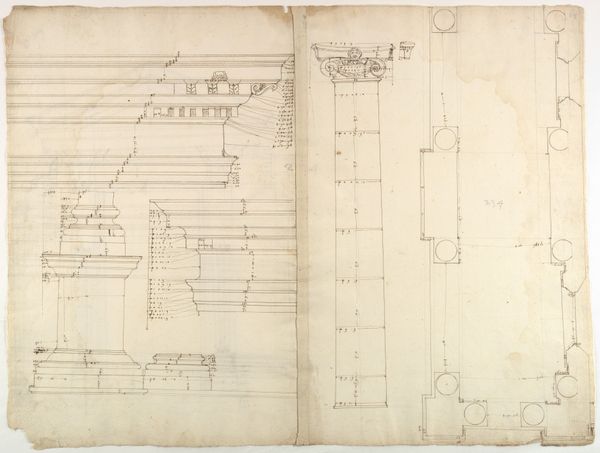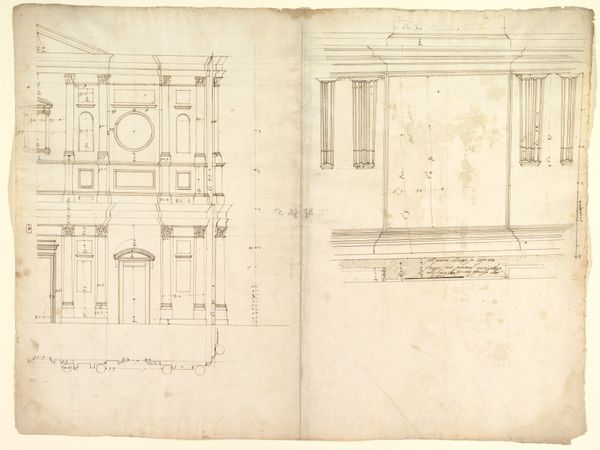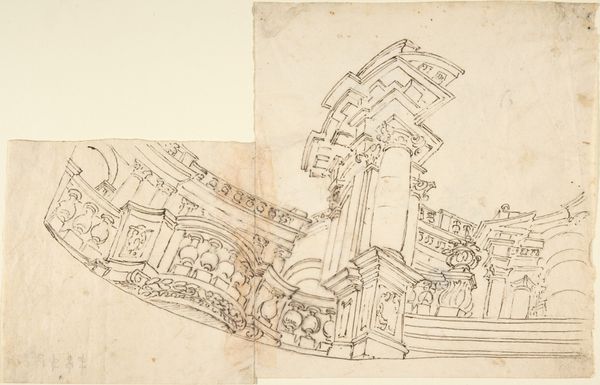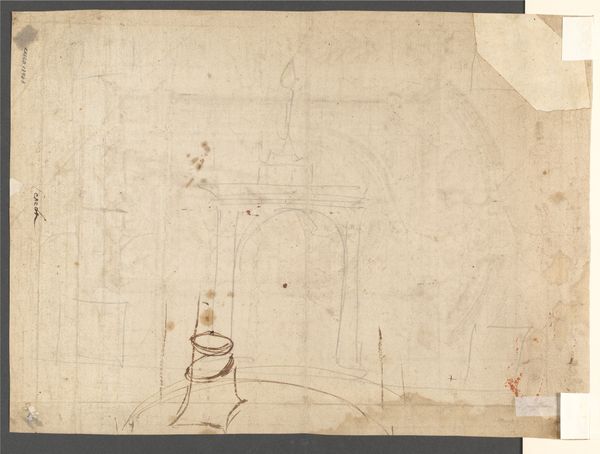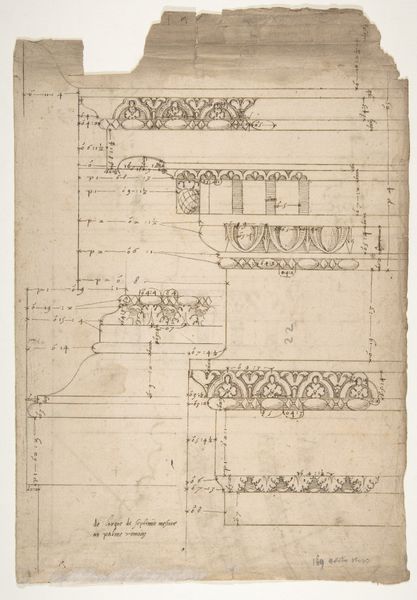
Pantheon, perspective elevation, partial plans, Corinthian pilaster capital and alcove details (recto) Pantheon, perspective sections, alcove elevations, partial plans (verso) 1500 - 1560
0:00
0:00
drawing, print, architecture
#
drawing
# print
#
perspective
#
form
#
11_renaissance
#
line
#
academic-art
#
architecture
Dimensions: sheet: 17 1/16 x 22 13/16 in. (43.4 x 58 cm)
Copyright: Public Domain
Curator: Here we have a drawing offering a perspective elevation along with partial plans of the Pantheon. It also gives precise details for Corinthian pilaster capital and alcove detailing on the verso side. It's believed to have been created sometime between 1500 and 1560. Editor: Wow, there’s a lot of intricate detail happening here, but something about the sepia tones evokes a sort of solemn reverence. Curator: The anonymous artist truly captured the essence of Renaissance architectural drafts. Think about the tools: meticulously crafted quill pens, handmade paper, and the intense labor it took to produce something so precise, all before the age of computers! Editor: Exactly. You can feel the artist painstakingly layering each line to map out the building. It's like gazing at the architectural skeleton itself. Though this building itself comes off rather neoclassical. Curator: These drawings weren’t simply aesthetic exercises; they functioned as a critical part of the construction and understanding of architecture. Knowledge was transferred via drawings, each precisely placed line dictating real physical actions for building craftsmen. Editor: Right, it's amazing to consider the drawing not just as art but as the medium for labor and construction itself. You can almost feel the texture of the building from the intricacy of the marks. But beyond function, do you sense an element of artistry? Curator: Absolutely, line work in Renaissance art wasn't mere representation; it conveyed intellectual precision and also carried cultural prestige and symbolism. The Corinthian capital detailing and the plan projections offer clues of how classical structures influenced designs. Editor: Yes, the use of a line to capture the essence of volume and depth with very delicate line weight creates this airy but commanding vision. Like peering into the building's soul itself. It speaks about the legacy the physical building now has as a landmark that inspired later craft. Curator: Right, it demonstrates an early application of how academic knowledge merged with actual building to become the reality of the Pantheon, all captured in a drawing with pigment and ink. Editor: Exactly. I come away contemplating about the countless minds that have poured into crafting even this simple medium, from pencil to page, while considering it only a mere sketch.
Comments
No comments
Be the first to comment and join the conversation on the ultimate creative platform.

